Travelers 2009 Annual Report Download - page 55
Download and view the complete annual report
Please find page 55 of the 2009 Travelers annual report below. You can navigate through the pages in the report by either clicking on the pages listed below, or by using the keyword search tool below to find specific information within the annual report.-
 1
1 -
 2
2 -
 3
3 -
 4
4 -
 5
5 -
 6
6 -
 7
7 -
 8
8 -
 9
9 -
 10
10 -
 11
11 -
 12
12 -
 13
13 -
 14
14 -
 15
15 -
 16
16 -
 17
17 -
 18
18 -
 19
19 -
 20
20 -
 21
21 -
 22
22 -
 23
23 -
 24
24 -
 25
25 -
 26
26 -
 27
27 -
 28
28 -
 29
29 -
 30
30 -
 31
31 -
 32
32 -
 33
33 -
 34
34 -
 35
35 -
 36
36 -
 37
37 -
 38
38 -
 39
39 -
 40
40 -
 41
41 -
 42
42 -
 43
43 -
 44
44 -
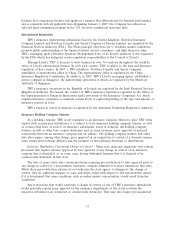 45
45 -
 46
46 -
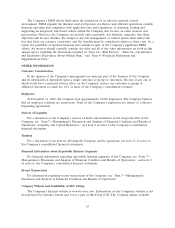 47
47 -
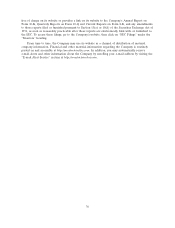 48
48 -
 49
49 -
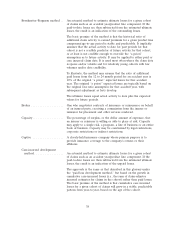 50
50 -
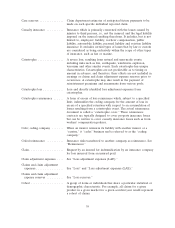 51
51 -
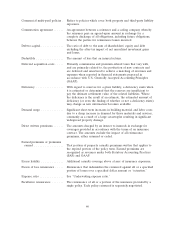 52
52 -
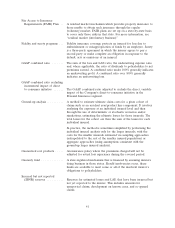 53
53 -
 54
54 -
 55
55 -
 56
56 -
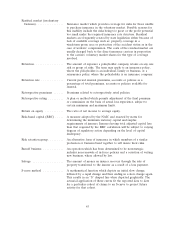 57
57 -
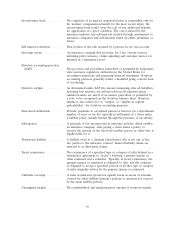 58
58 -
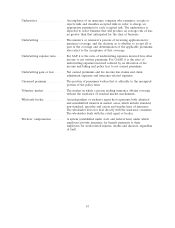 59
59 -
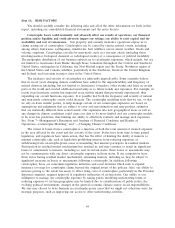 60
60 -
 61
61 -
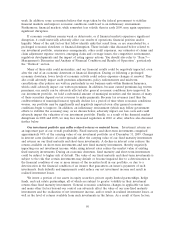 62
62 -
 63
63 -
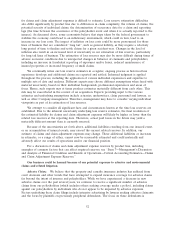 64
64 -
 65
65 -
 66
66 -
 67
67 -
 68
68 -
 69
69 -
 70
70 -
 71
71 -
 72
72 -
 73
73 -
 74
74 -
 75
75 -
 76
76 -
 77
77 -
 78
78 -
 79
79 -
 80
80 -
 81
81 -
 82
82 -
 83
83 -
 84
84 -
 85
85 -
 86
86 -
 87
87 -
 88
88 -
 89
89 -
 90
90 -
 91
91 -
 92
92 -
 93
93 -
 94
94 -
 95
95 -
 96
96 -
 97
97 -
 98
98 -
 99
99 -
 100
100 -
 101
101 -
 102
102 -
 103
103 -
 104
104 -
 105
105 -
 106
106 -
 107
107 -
 108
108 -
 109
109 -
 110
110 -
 111
111 -
 112
112 -
 113
113 -
 114
114 -
 115
115 -
 116
116 -
 117
117 -
 118
118 -
 119
119 -
 120
120 -
 121
121 -
 122
122 -
 123
123 -
 124
124 -
 125
125 -
 126
126 -
 127
127 -
 128
128 -
 129
129 -
 130
130 -
 131
131 -
 132
132 -
 133
133 -
 134
134 -
 135
135 -
 136
136 -
 137
137 -
 138
138 -
 139
139 -
 140
140 -
 141
141 -
 142
142 -
 143
143 -
 144
144 -
 145
145 -
 146
146 -
 147
147 -
 148
148 -
 149
149 -
 150
150 -
 151
151 -
 152
152 -
 153
153 -
 154
154 -
 155
155 -
 156
156 -
 157
157 -
 158
158 -
 159
159 -
 160
160 -
 161
161 -
 162
162 -
 163
163 -
 164
164 -
 165
165 -
 166
166 -
 167
167 -
 168
168 -
 169
169 -
 170
170 -
 171
171 -
 172
172 -
 173
173 -
 174
174 -
 175
175 -
 176
176 -
 177
177 -
 178
178 -
 179
179 -
 180
180 -
 181
181 -
 182
182 -
 183
183 -
 184
184 -
 185
185 -
 186
186 -
 187
187 -
 188
188 -
 189
189 -
 190
190 -
 191
191 -
 192
192 -
 193
193 -
 194
194 -
 195
195 -
 196
196 -
 197
197 -
 198
198 -
 199
199 -
 200
200 -
 201
201 -
 202
202 -
 203
203 -
 204
204 -
 205
205 -
 206
206 -
 207
207 -
 208
208 -
 209
209 -
 210
210 -
 211
211 -
 212
212 -
 213
213 -
 214
214 -
 215
215 -
 216
216 -
 217
217 -
 218
218 -
 219
219 -
 220
220 -
 221
221 -
 222
222 -
 223
223 -
 224
224 -
 225
225 -
 226
226 -
 227
227 -
 228
228 -
 229
229 -
 230
230 -
 231
231 -
 232
232 -
 233
233 -
 234
234 -
 235
235 -
 236
236 -
 237
237 -
 238
238 -
 239
239 -
 240
240 -
 241
241 -
 242
242 -
 243
243 -
 244
244 -
 245
245 -
 246
246 -
 247
247 -
 248
248 -
 249
249 -
 250
250 -
 251
251 -
 252
252 -
 253
253 -
 254
254 -
 255
255 -
 256
256 -
 257
257 -
 258
258 -
 259
259 -
 260
260 -
 261
261 -
 262
262 -
 263
263 -
 264
264 -
 265
265 -
 266
266 -
 267
267 -
 268
268 -
 269
269 -
 270
270 -
 271
271 -
 272
272 -
 273
273 -
 274
274 -
 275
275 -
 276
276 -
 277
277 -
 278
278 -
 279
279 -
 280
280 -
 281
281 -
 282
282 -
 283
283 -
 284
284 -
 285
285 -
 286
286 -
 287
287 -
 288
288 -
 289
289 -
 290
290 -
 291
291 -
 292
292 -
 293
293 -
 294
294 -
 295
295
 |
 |
National Association of
Insurance Commissioners
(NAIC) . . . . . . . . . . . . . . . . An organization of the insurance commissioners or directors of all
50 states, the District of Columbia and the five U.S. territories
organized to promote consistency of regulatory practice and
statutory accounting standards throughout the United States.
Net written premiums . . . . . . . . Direct written premiums plus assumed reinsurance premiums less
premiums ceded to reinsurers.
Operating income (loss) . . . . . . Net income (loss) excluding the after-tax impact of net realized
investment gains (losses), discontinued operations and cumulative
effect of changes in accounting principles when applicable.
Operating income (loss) per
share . . . . . . . . . . . . . . . . . . Operating income (loss) on a per share basis.
Operating return on equity . . . . The ratio of operating income to average equity excluding net
unrealized investment gains and losses and discontinued operations,
net of tax.
Paid development method . . . . . An actuarial method to estimate ultimate losses for a given cohort
of claims such as an accident year/product line component. If the
paid-to-date losses are then subtracted from the estimated ultimate
losses, the result is an indication of the unpaid losses.
The basic premise of the method is that cumulative paid losses for
a given cohort of claims will grow in a stable, predictable pattern
from year-to-year, based on the age of the cohort. These age-to-age
growth factors are sometimes called ‘‘link ratios.’’
For example, if cumulative paid losses for a product line XYZ for
accident year 2004 were $100 as of December 31, 2004 (12 months
after the start of that accident year), then grew to $120 as of
December 31, 2005 (24 months after the start), the link ratio for
that accident year from 12 to 24 months would be 1.20. If the link
ratio for other recent accident years from 12 to 24 months for that
product line were also at or around 1.20, then the method would
assume a similar result for the most recent accident year, i.e., that it
too would have its cumulative paid losses grow 120% from the
12 month to 24 month valuation.
This is repeated for each age-to-age period into the future until the
age-to-age link ratios for future periods are assumed to be 1.0
(i.e., the age at which cumulative losses are assumed to have
stopped growing).
A given accident year’s cumulative losses are then projected to
ultimate by multiplying current cumulative losses by successive
age-to-age link ratios up to that future age where growth is
expected to end. For example, if growth is expected to end at
60 months, then the ultimate indication for an accident year with
cumulative losses at 12 months equals those losses times a 12 to
24 month link ratio, times a 24 to 36 month link ratio, times a 36 to
48 month link ratio, times a 48 to 60 month link ratio.
43
